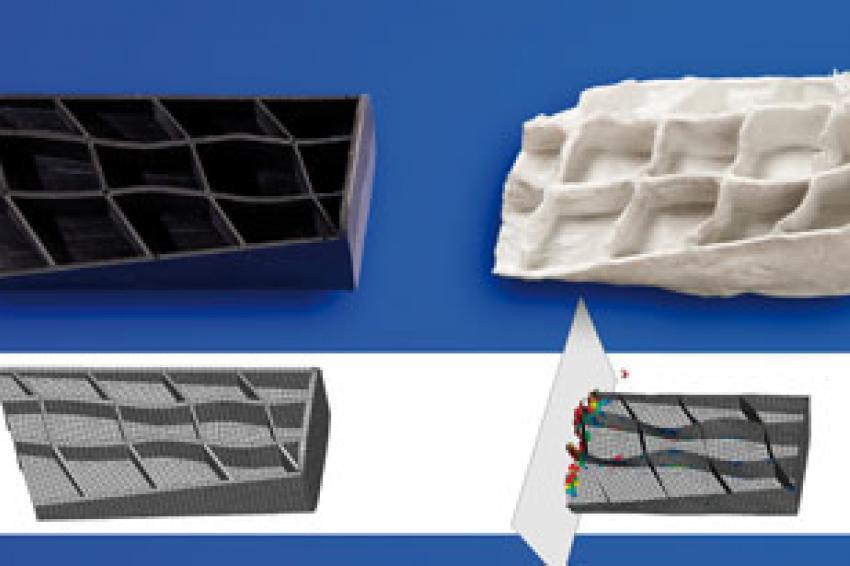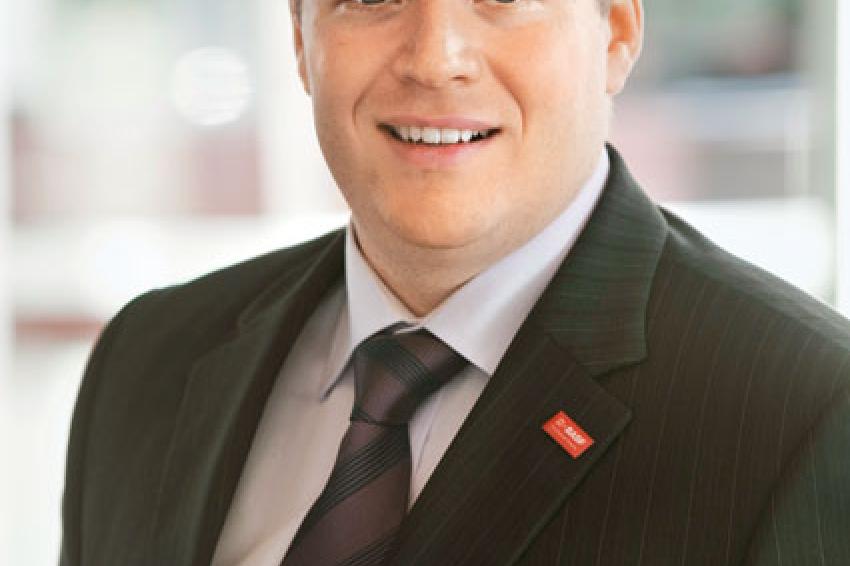Metal Substitution
Long Fibers for Structural Components
VIP-Visions in Plastics - In the past, designers have often had to rely on metal in sectors in which the most demanding technical requirements must be satisfied: in the automotive and machinery industries but also in the construction sector, home appliances and the leisure sector. However, this is where plastics can provide the greatest benefits, since when it comes to mobility, resources can be conserved and thus the environmental impact reduced. Moreover, when designing complex machinery, function integration and ease of processing count: these three features make plastic a highly beneficial lightweight material.
But more demanding applications require greater performance from the plastic. Disregarding high-temperature materials such as PEEK (Polyether-ether-ketone) or polysulfones, the greatest advances have been made with specifically formulated polyamide grades, as can be seen from the first volume production of plastic transmission cross beams and engine mounts in 2009. Yet, additional innovations are necessary if this class of materials wishes to make even greater inroads in high-load applications in the machinery and automotive industries.
With this in mind, BASF has entered the market with a new class of high-performance polyamides and presents its first long glass-fiber-reinforced (LF) polyamide grade Ultramid Structure LF. This product group, which is new in BASF's portfolio, represents a considerable advance in terms of performance with metal substitution as the objective, since where even highly optimized short glass fiber-reinforced products reach their limitations, LF polyamides offer new opportunities.
The self-confident name also shows that these polyamides are part of the new group of specialty polyamides designated Ultramid Structure LF, with the aid of which BASF is taking a large step in the direction of specialty engineering resins with high capability.
Greater Performance Thanks to the 3-D Network
The exceptional feature of components made from long glass-fiber-reinforced plastic is the three-dimensional glass-fiber network that forms during conventional injection molding, imparting the end product with its outstanding physical properties at both low and elevated temperatures. The fiber network forms the skeleton of the component and is retained even after ashing. This structure is the reason why the warpage, creep behavior and energy absorption of this material class already approaches the behavior of metals without losing the classical benefits of plastic (Fig. 1).
Production of LF resins employs the pultrusion process to first create plastic strands containing endless glass fibers. In a second step, these strands are cut to a pellet length of 12 mm. The customer can process the LF granules on a conventional injection molding machine. With a favorable distribution of fibers in the molded plastic part, a three-dimensional fiber network of primarily three to six millimeters long fibers is formed directly without any significant additional effort. Processors can avoid major investment costs, and still gain access to a new sophisticated material: compared to classical reinforced polyamides with only 0.3 mm long fibers, entirely new component characteristics are achieved.
Properties And Applications
These exceptional component properties come from the enhanced mechanical capabilities brought about by the long glass-fibers: the LF polyamide grades Ultramid Structure are very stiff and strong at elevated temperatures, while at low temperatures they exhibit outstanding impact strength. Compared to conventional materials, the impressive creep behavior, the minimal warpage and the far higher energy absorption - and thus crash performance - are further benefits (Fig. 2).
The automotive industry has several obvious potential applications for the new LF polyamides. Engine mounts, metal inserts in seat structures or battery carriers are some examples. So are crash absorbers which are intended to undergo controlled destruction upon impact in order to absorb as much energy as possible and thus protect the rest of the vehicle. At the same time, other branches of industry need plastic components that can withstand high loads as well, e.g. coffee machines, where replacements for die-cast parts are sought, threaded connectors or components in bicycles and power drills. Moreover, Ultramid Structure LF can be applied in the construction sector, where high technical standards in terms of durability, resistance to weathering or constant loadability are required. Therefore, it is suitable for continuous-use construction applications, such as securing elements, structural components, façade mountings or frame elements for photovoltaic installations.
Ultramid Structure LF And Ultrasim
In addition to its solid backwards integration of PA precursors, BASF benefits from two additional aspects regarding its entrée into the LF polyamides market: decades of experience and extensive formulation know-how from its wide range of classical PA 6 and PA 66 grades, as well as the capabilities offered by what has become a universal simulation instrument, namely, Ultrasim.
Over the past few years, Ultrasim has proven to be a valuable simulation tool for designing parts mainly in the automotive sector but in the meantime in other sectors as well. In addition to accurate predictions of component behavior as a function of gating parameters and fiber anisotropy, it is possible to establish the best possible shape under the given conditions with the aid of Mathematical Component Optimization. As part of its entry into the market with the new polyamides, BASF has also upgraded the capabilities of this computer-based tool to permit simulation of components reinforced with long glass-fibers. The best example is a crash absorber made of Ultramid Structure LF developed in-house: its controlled failure upon impact is predicted and mapped precisely by Ultrasim. Experiment and Simulation match closely, so that - as in the case of short glass-fiber-reinforced materials - BASF will offer appropriate methods and be able to assist with component design for the new product group Ultramid Structure: this is a service that is not yet available in the LF-polyamide market in this comprehensive form (Fig. 3).
BASF has been operating a pultrusion line on a pilot scale for the last two years and is currently investing in an industrial-scale plant. This demonstrates its commitment to long-term involvement in this new field.
The company has started with a small range of PA 6 and PA 66 grades with LF levels between 40 % and 60 % as well as various types of stabilization. This portfolio will be expanded in the future to meet market requirements. First customers have achieved good results with the product.










